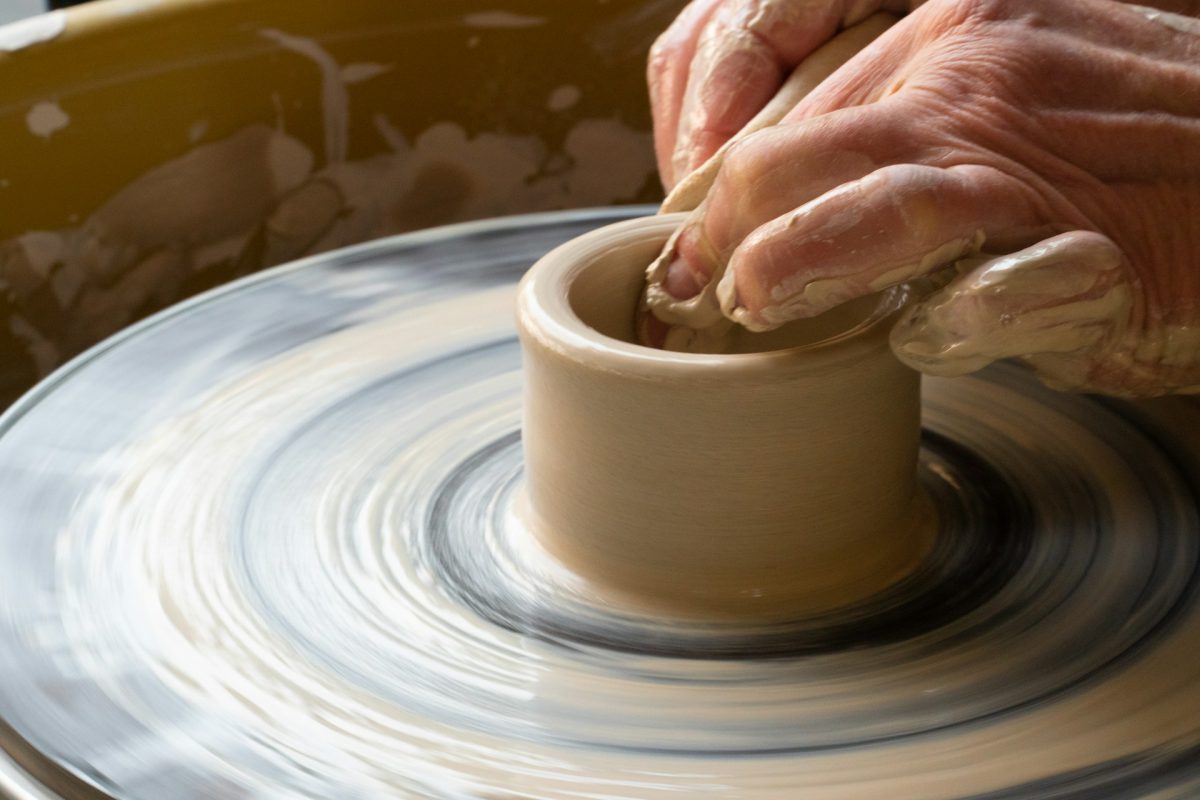Table of Contents
Persian pottery boasts a rich history that stretches back to ancient times, intimately tied to the dawn of agriculture. As early civilizations began to cultivate the fertile lands of the Iranian plateau, the necessity for functional items arose. The early inhabitants crafted simple yet essential utensils from clay, utilizing the natural resources around them to fulfill their daily needs. This practical approach marked the beginning of a vibrant tradition that would evolve over centuries.
As these primitive societies flourished, so too did their pottery techniques. Each piece crafted from the earth not only served a utilitarian purpose but also reflected the cultural identity of its makers. The transition from basic vessels to more intricate designs illustrates how pottery became a canvas for artistic expression, intertwining functionality with aesthetics. This evolution laid the groundwork for the exquisite craftsmanship that Persian pottery is renowned for today.
History of Persian Pottery
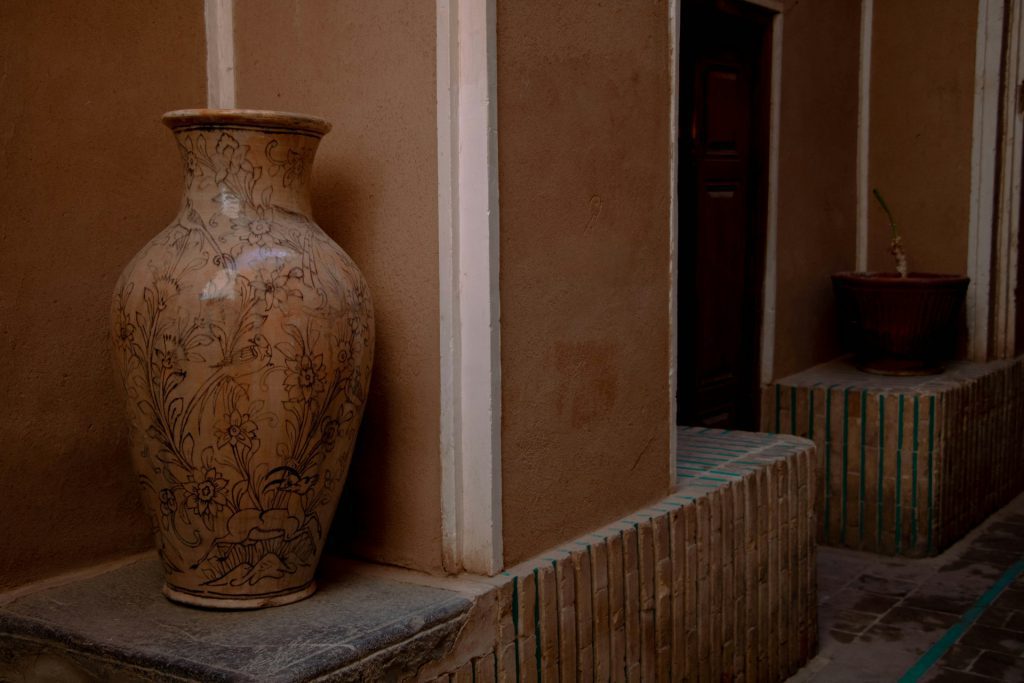
The artistry of Persian pottery can be traced back to the early Neolithic Age, around the 7th millennium BCE. This ancient craft emerged alongside the advent of agriculture, which transformed the way people lived and interacted with their environment. As communities settled and began cultivating the land, the need for durable, functional items became apparent. This necessity led to the creation of clay utensils, marking a significant milestone in the evolution of Iranian craftsmanship.
As these early potters honed their skills, they not only produced practical tools but also laid the foundation for a profound artistic tradition. The transition from basic clay forms to more sophisticated designs signifies the growing cultural complexity of the region. With each piece, artisans infused their work with a sense of identity and heritage, transforming simple vessels into remarkable expressions of creativity that resonate through history.
Evolution of Persian Pottery
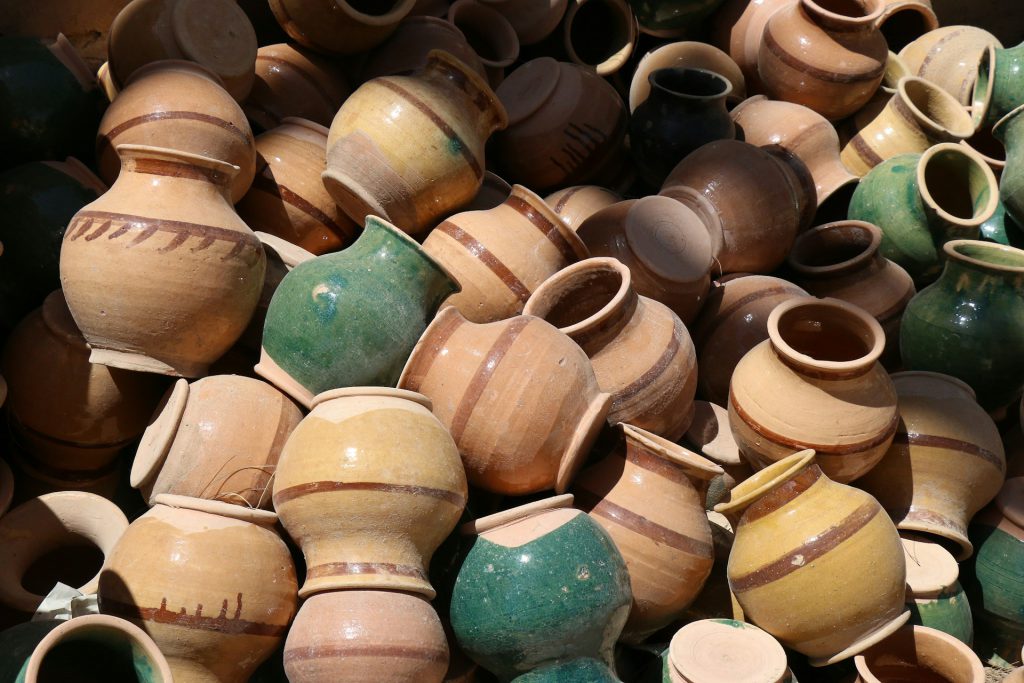
The journey of Persian pottery unfolds through five distinct stages:
First Age: The Temporary Establishment Era
- Initial experiments with clay as communities began to settle.
Among the remarkable pottery artifacts uncovered in the Western province of Kermanshah, the “Venus of Sarab” stands out as a significant piece. Dating back to 6000 B.C., this sculpture serves as a powerful symbol of fertility, embodying the ancient beliefs and values of the people who created it. The Venus of Sarab not only showcases the artistic skills of early Iranian potters but also provides insight into the cultural and spiritual life of the era.
This artifact highlights the deep connection between art and daily life in ancient Persia, reflecting the importance of fertility and femininity in their society. As one of the earliest known sculptures, the Venus of Sarab represents a fascinating link to the past, illustrating how pottery was not merely functional but also a medium for expressing profound cultural ideologies.
Second Age: The Permanent Establishment Era
- The emergence of more durable and refined techniques, allowed for varied pottery forms.
The second age of Iran pottery coincided with a transformative period when communities began to settle permanently in rural areas, cultivating the land to secure their livelihoods and sustain livestock. This deep connection to the earth fostered a profound appreciation for the resources it provided, which was beautifully expressed through the intricate patterns and designs on their pottery. The artisans of this era utilized local materials to create functional items that reflected their gratitude for the land.
Excavations at Teppe Zagheh, near Qazvin, have revealed pottery from this significant period, classified into three main categories: Simple Zagheh Pottery Dishes, Painted Zagheh Pottery Dishes, and Special Zagheh Pottery Dishes. Dating back to the late 6th millennium B.C., these pieces exhibit smooth surfaces, predominantly in red hues, and often feature geometric shapes. The craftsmanship evident in these pottery dishes not only showcases the artisans’ skills but also offers a glimpse into the cultural values and aesthetic sensibilities of the time.
Third Age: Middle Plateau Era
- Increased sophistication is influenced by cultural exchanges and innovations.
The third age of Persian pottery is marked by a significant technological advancement: the introduction of the pottery wheel. This innovation allowed artisans to create dishes with greater precision and variety in design. The surfaces of these pottery pieces were often adorned with intricate black-painted patterns that depicted a diverse range of subjects, including geometric shapes, animals, plants, and scenes from daily life, such as celebrations and dance rituals. This era showcased an explosion of creativity, reflecting the cultural richness of the time.
Excavations at Teppe Mousian, in the ancient city of Susa, have uncovered pottery dating from 3500 to 2500 B.C. Among the notable finds is “The Bushel with Ibex Motifs,” which exemplifies the early use of ‘animal style’ in pottery decoration. The depiction of the ibex, a mountain goat native to the Susa region, highlights the artisans’ ability to connect their artwork with the natural world around them. This piece not only serves as a testament to the craftsmanship of the era but also offers valuable insights into the cultural significance of animal motifs in ancient Persian society.
Fourth Age: The Historical or Urbanization Era
- Flourishing of pottery alongside city growth, with new methods and styles.
The fourth age of Iran pottery signifies a notable transition with the emergence of grey pottery dishes around 3000 B.C., which replaced the previously dominant red and brown varieties. This style, often referred to as “Aryan Immigrants’ Pottery,” quickly spread across the Iranian Plateau, representing a shift in both aesthetic and cultural practices. The introduction of grey pottery reflects significant advancements in the lifestyles of the people, showcasing their evolving needs and tastes.
As civilization began to flourish in southern Iran, particularly in regions like Susa and Iylam, the artistic techniques associated with pottery-making underwent considerable refinement. The developments of the Bronze and Iron Ages brought forth remarkable innovations, leading to the creation of stunning pottery artifacts. Notably, significant grey pottery dishes have been unearthed at Teppe Hasanlou, situated in northern Iran. These discoveries not only highlight the technical prowess of the artisans of this era but also mark an important chapter in the rich tapestry of Persian cultural history.
Fifth Age: The Islamic Era
- Introduction of intricate designs and vibrant glazes, blending traditional craftsmanship with spiritual motifs.
Following the conquest of the Arab Umayyad dynasty over the Sassanid Empire, Persian culture experienced profound changes, particularly in literature, art, and language. This transformation extended to pottery, which evolved through three significant chapters during the Islamic period: the Samanid, Seljuk, and Safavid eras.
I. Pottery in the Samanid Age: During the Samanid era, a revolutionary technique called “slip painting” emerged, enabling artisans to mix semi-fluid clay with colors, ensuring the designs remained intact during firing. This period saw the incorporation of motifs from the Sasanian Dynasty, featuring intricate depictions of horsemen, birds, and Arabic calligraphy, which enriched the visual language of Iran pottery.
II. Pottery in the Seljuk Empire: The Seljuk Empire marked a golden age for Persian pottery, with Kashan emerging as the epicenter of production. Artisans crafted celebrated pottery types, such as lusterware, underglaze painted ware, and polychrome overglaze painted mina’i ware. However, this flourishing creativity faced a setback with the Mongol invasion, which temporarily disrupted the artistry. Yet, soon after, Mongol pottery masters reignited the tradition, integrating their influences into Persian pottery-making.
III. Pottery in the Safavid Era: The Safavid Empire, spanning two centuries, represents one of the most illustrious chapters in Persian art, although much was lost to time. Key characteristics of Safavid pottery, as outlined by Lisa Golombek et al., include motifs like peach blossoms, grassy plants, tree branches, and continuous lotus scrolls. These designs often mirrored Chinese porcelain styles from the Ming and Yuan Dynasties, highlighting the significant cross-cultural exchanges of the time. The intricate details and diverse patterns of Safavid pottery illustrate a rich tapestry of artistic expression that continues to captivate admirers today.
How to Make Persian Pottery
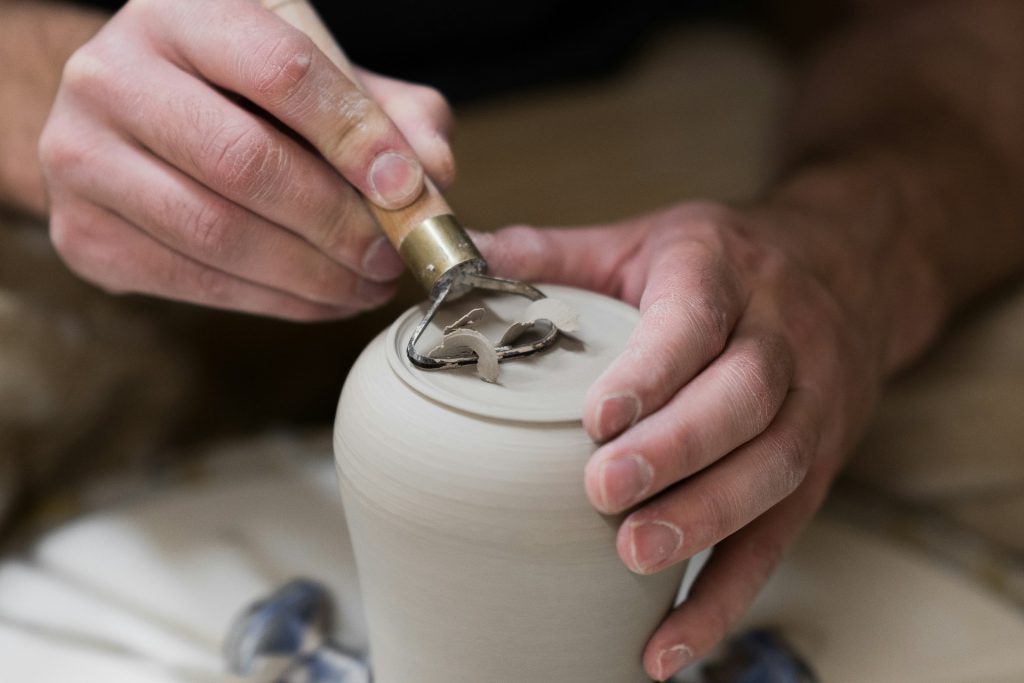
- Select the Right Clay
- Choose red clay for its durability and aesthetic appeal.
- Consider different types of clay:
- Kaolin: Used for porcelain dishes.
- Bole Clay: Available in various colors for vibrant Persian ceramics.
- Fireclay: Resistant to high temperatures.
- Adobe Clay: Versatile for everyday pottery.
- Shape the Clay: Use hand techniques or a pottery wheel to form the desired vessel.
- Decorate the Pottery: Apply intricate patterns that reflect Persian cultural heritage.
- Dry the Pieces: Allow the shaped clay to dry thoroughly before firing.
- Fire the Pottery: Place the dried pieces in a kiln and fire at high temperatures to harden.
- Apply Glazes: Add glazes to enhance colors and textures, making the pottery visually appealing.
- Finish the Pottery: After firing, the pieces are now durable and ready for use or display.
This process combines traditional techniques with artistic expression, resulting in stunning Persian pottery.
Where to Buy Persian Pottery Works
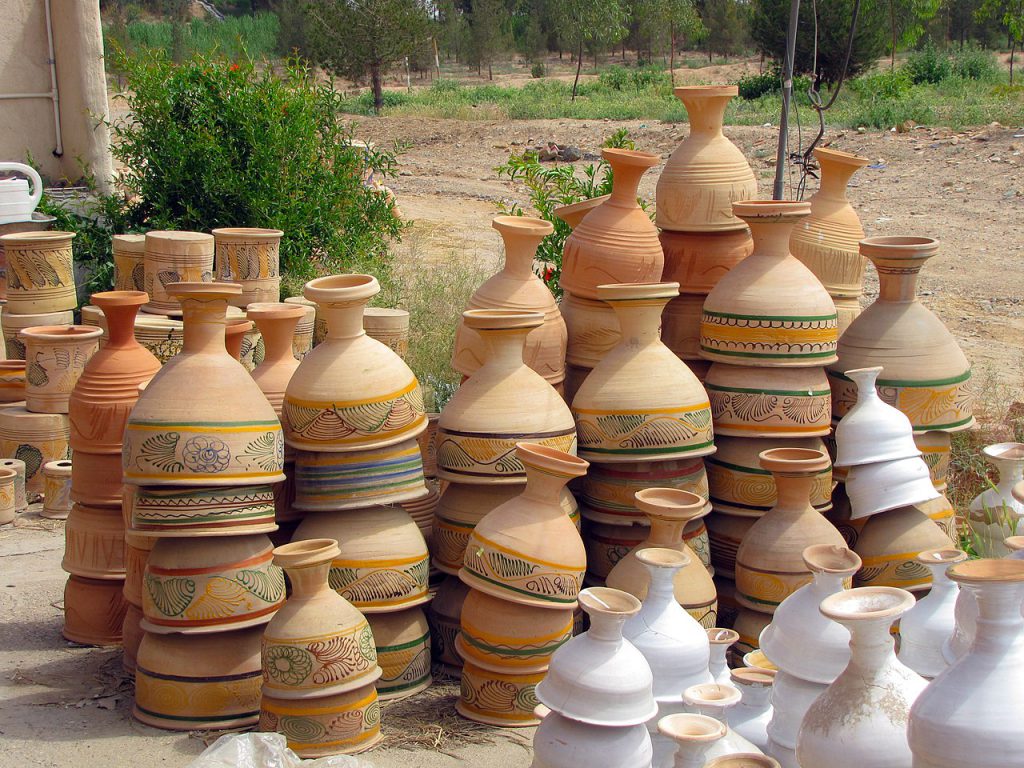
Laljin
Laljin stands out as a vibrant hub for Persian pottery, often celebrated as the Middle East’s ceramic center. With around 80 percent of its population engaged in pottery and ceramic arts, this city has become a global beacon for exquisite craftsmanship. The diverse range of products created by Laljin’s dedicated artisans includes both decorative and functional dishes, making it a prime destination for anyone seeking authentic Persian pottery. Many of these beautiful pieces are not only sold locally but are also exported to various countries, showcasing the talent and creativity of this region.
Meybod
When exploring the rich tapestry of Persian pottery, Meybod stands out as the “Pottery Capital of Iran.” This city showcases dishes that reflect the region’s unique climate and landscape. The intricate patterns, such as “The Lady Sun” and “The Bird and the Fish,” echo the desert’s sunny disposition and the challenges of water scarcity. Visitors to Meybod can immerse themselves in this cultural heritage and find beautiful pottery that tells a story of its environment.
Semnan
Semnan is another notable location, recognized for its high-quality pottery that marries modern techniques with ancient themes, resulting in striking art pieces. The pottery industry here incorporates innovative approaches while honoring traditional designs, making it a fantastic destination for collectors and enthusiasts alike.
Shahr-Reza
Likewise, Shahr-Reza, nestled in Isfahan, boasts a landscape rich in clay, making it an ideal spot for pottery enthusiasts. The artistry here reflects the historical significance of Isfahan as a former capital during the Safavid era, offering a wide array of beautifully crafted pottery that embodies the region’s storied past.
Kalpourgan
Meanwhile, the Kalpourgan village in Sistan and Baluchistan offers a unique experience with its handmade pottery that has remained unchanged for thousands of years. Visitors can engage with local artisans at the Kalpourgan Clay Living Museum, where they can learn the traditional craft and even create their own pottery pieces. Each of these locations not only provides beautiful pottery but also a deeper connection to the cultural narratives that shape these remarkable works.
FAQs about Persian Pottery
Q1: How old is Persian pottery?
A1: Persian pottery is over 9,000 years old, starting around 7,000 BCE.
Q2: How did the Islamic era change Persian pottery?
A2: The Islamic era added new designs and techniques, making pottery more detailed and artistic.
Q3: Where can I buy Persian pottery?
A3: You can buy Persian pottery in places like Laljin, Meybod, Semnan, Shahr-Reza, and Kalpourgan.
Q4: What is the Venus of Sarab?
A4: The Venus of Sarab is an ancient sculpture from 6000 BCE that represents fertility and shows early Persian pottery skills.
Q5: What did the pottery wheel do for Persian pottery?
A5: The pottery wheel helped make pottery more precise and detailed, allowing for more creative designs.
Last Words: Discover the Best of Persian Pottery with a Customized Tour
Persian pottery has a long history, starting in ancient times with the rise of farming. As early people on the Iranian plateau began growing crops, they needed simple tools for everyday life. They made basic clay items using the natural materials around them. This practical need was the start of a tradition that grew over time. This growth led to the stunning craftsmanship Persian pottery is known for today.
If you’re looking to immerse yourself in the enchanting world of Persian pottery, traveling to Iran through a Customized tour is the best way to ensure a truly memorable experience. To make your journey seamless and enjoyable, consider partnering with To Iran Tour. This professional tour operator specializes in designing Iran tours and travel packages that cater to your unique preferences and interests. Whether you wish to engage directly with local artisans, participate in pottery workshops, or discover the rich history behind each region’s craft, To Iran Tour is dedicated to creating a travel plan that suits your desires.
We are here to help you have a great experience in Iran, ensuring that your exploration of Persian pottery is both enriching and unforgettable. Embrace the beauty of Iran Tours and let your adventure begin!

